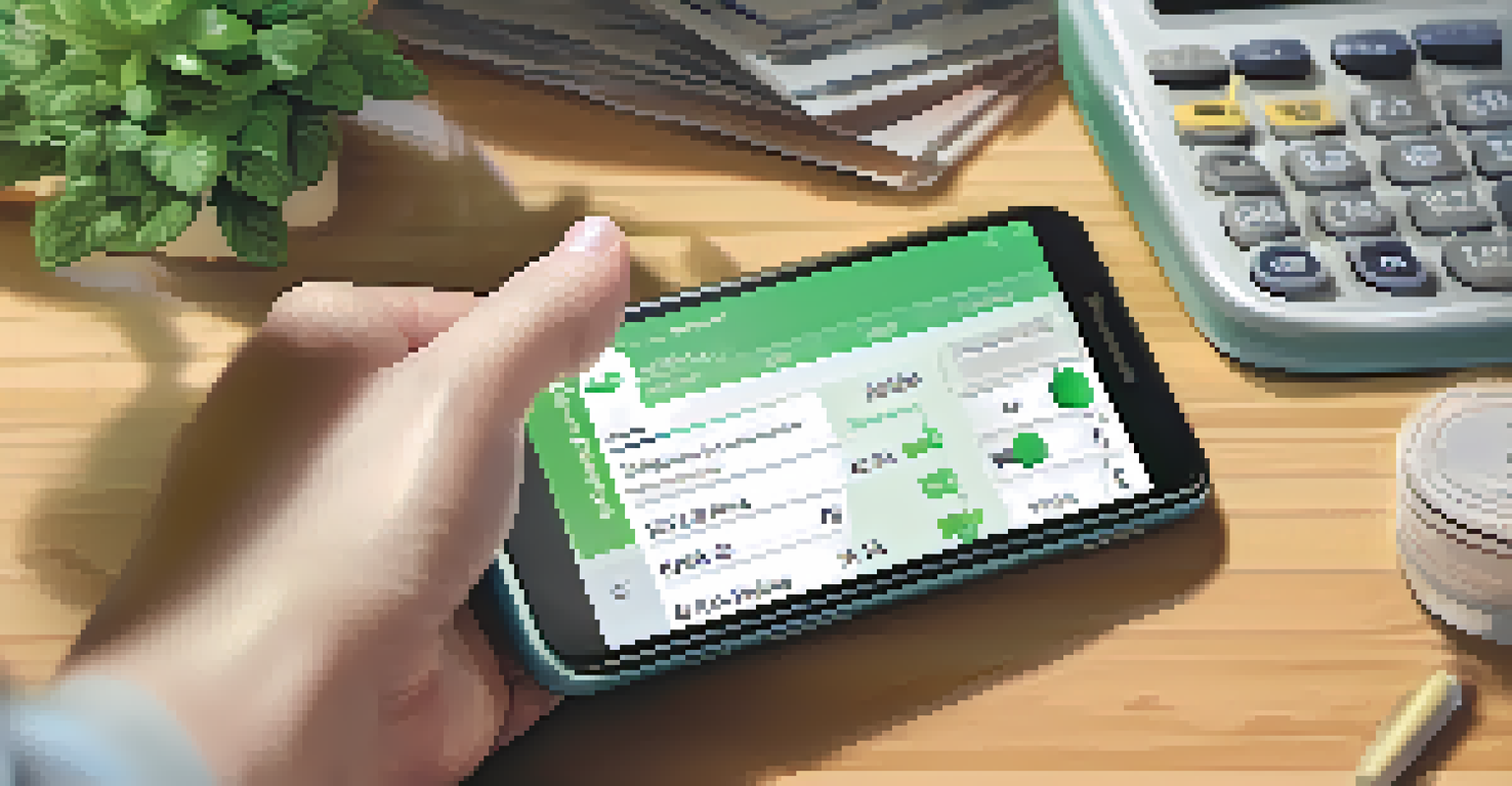Common Mistakes When Building an Emergency Fund

Not Setting a Clear Savings Goal for Your Fund
One of the most common mistakes people make is not defining a specific savings goal for their emergency fund. Without a target amount, it’s easy to become overwhelmed or lose motivation. Think of it like aiming for a bullseye; if you don’t know where the target is, you might miss it entirely.
A goal without a plan is just a wish.
A good rule of thumb is to aim for three to six months' worth of living expenses. This gives you a solid cushion to fall back on during unexpected events, like medical emergencies or job loss. By having a clear goal, you’ll find it easier to prioritize your savings and track your progress.
Once you’ve set your target, break it down into manageable monthly contributions. For example, if your goal is $6,000, aim to save $500 each month. This way, you’ll not only stay on track but also celebrate small wins along the way, keeping your motivation high.
Using Your Emergency Fund for Non-Emergencies
Another common pitfall is dipping into your emergency fund for non-emergency expenses, like a spontaneous vacation or a new gadget. While it might feel tempting at the moment, this can significantly undermine the purpose of your savings. Think of your emergency fund as a life raft; it’s there to keep you afloat during turbulent times, not for leisure activities.

To avoid this mistake, consider setting up a separate savings account for discretionary spending. This way, you’ll have a clear distinction between what’s for emergencies and what’s for fun. Having boundaries can make it easier to resist the temptation to raid your emergency fund.
Set Clear Savings Goals
Defining a specific target for your emergency fund helps maintain motivation and track progress.
Also, make it a habit to ask yourself if an expense is truly an emergency before using your fund. Questions like 'Is this a necessary expense?' or 'Can I wait until next month?' can help you maintain the integrity of your emergency savings.
Failing to Regularly Review and Adjust Your Fund
It’s easy to set your emergency fund and forget about it, but failing to review and adjust it regularly can be detrimental. Life changes, such as a new job, moving to a different city, or having a child, can affect your financial situation and the amount you should save. Think of it like tuning up a car; regular check-ups ensure everything runs smoothly.
The future depends on what you do today.
Aim to review your emergency fund at least once a year. During this review, assess your living expenses and any changes in your financial obligations. If your expenses have increased, you may need to adjust your savings goal to accommodate those changes.
Additionally, consider inflation and how it may impact your purchasing power over time. By staying proactive and making necessary adjustments, you’ll ensure your emergency fund remains robust and effective for your needs.
Not Keeping Your Fund Accessible Yet Separate
Accessibility is crucial when it comes to an emergency fund, yet many people make the mistake of keeping it too accessible. If your emergency fund is in your checking account, it may be too easy to spend it on non-emergencies. On the flip side, if it’s too difficult to access, you may struggle when you actually need it.
A good approach is to keep your emergency fund in a high-yield savings account. This allows you to earn some interest while still having quick access to your money when needed. It’s like having your cake and eating it too; you get the benefits of savings without sacrificing accessibility.
Keep Funds Accessible Yet Separate
Storing your emergency fund in a high-yield savings account ensures quick access while preventing unnecessary spending.
Just ensure that the account is separate from your regular spending account. This creates a mental barrier that helps you resist the temptation to use your emergency funds for everyday expenses.
Underestimating the Importance of an Emergency Fund
Some people underestimate the importance of having an emergency fund, believing that they can rely on credit cards or loans in a crunch. While credit can be a helpful tool, it often comes with high-interest rates and stress, especially during emergencies. Think of your emergency fund as a financial safety net, preventing you from falling into debt.
Having a solid emergency fund can also provide peace of mind. Knowing you have a financial cushion allows you to focus on other aspects of your life without the constant worry of unexpected expenses. It’s like having an insurance policy against life’s unpredictability.
By prioritizing your emergency fund, you’re investing in your future. The security it provides can empower you to take calculated risks, such as starting a new job or pursuing further education, knowing you have a safety net to fall back on.
Neglecting to Include All Potential Expenses
When building your emergency fund, it’s essential to consider all potential expenses that could arise. Many people only think about job loss or medical emergencies and forget about other possible financial strains, like car repairs or home maintenance. It’s akin to packing for a trip; if you only pack for sunny weather, you might find yourself unprepared for rain.
To ensure you cover all bases, make a comprehensive list of possible emergencies you might face. This can include anything from major appliances breaking down to unexpected travel costs for family emergencies. By considering various scenarios, you can better gauge the amount you need to save.
Review and Adjust Regularly
Regularly assessing your emergency fund allows you to adapt to life changes and inflation, keeping your savings effective.
Additionally, keep in mind that expenses can vary based on your lifestyle and family situation. Regularly updating your list will help you adjust your savings goal to account for any new expenses that may arise over time.
Getting Discouraged by Slow Progress
Building an emergency fund can feel like a slow, daunting process, especially when life throws unexpected expenses your way. Many people become discouraged when they don’t see immediate results, leading to the temptation to give up altogether. However, consider it like training for a marathon; progress takes time and consistency.
To combat feelings of discouragement, celebrate small milestones along the way. For example, if you reach the halfway point of your savings goal, treat yourself to a small reward. This can help keep your motivation high and remind you that every step counts.

Remember, the journey to financial security is a marathon, not a sprint. Focus on the long-term benefits of having an emergency fund, and trust that your consistent efforts will pay off in time.